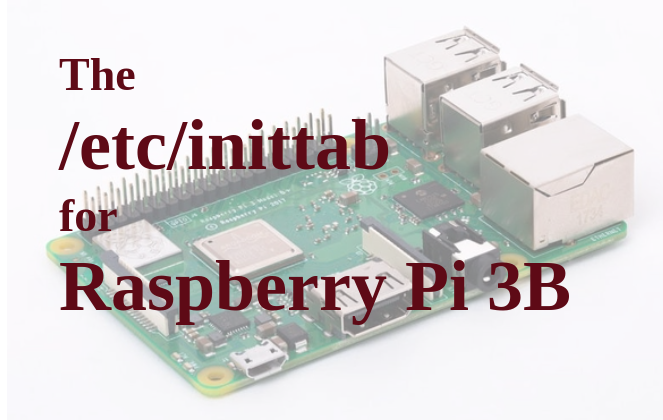System configuration and startup for Raspberry Pi 3 Model B
Share on:Edit on:Table of Contents
Introduction
In the earlier articles, we cross-compiled the basic software packages, successfully boot the Raspberry Pi 3B over the network and able to execute some basic commands.
In this article we will find out how to mount virtual filesystems and add/modify/delete the init scripts.

Mounting virtual filesystems
If you try to execute the commands like ps or any other process related command, you will encounter an error saying,
PID USER TIME COMMAND
ps: can't open '/proc': No such file or directory
It’s because the proc virtual file system is not mounted. Similarly there is a sysfs virtual filesystem which exposes hardware and device driver information from kernel space to user space.
Let’s create mount points in the root filesystem before mounting those virtual filesystems. Create proc, sys directories in the busybox filesystem using the following command.
mkdir -p ~/rpi3/nfs/{proc,sys}
Now power up the board and mount these virtual filesystems using the following commands.
mount -t proc nodev /proc
mount -t sysfs nodev /sys
Run the ps command. It should work fine now.
The above process of mounting can be automated every time the board boots by using the init scripts. Let’s see the next section about /etc/inittab.
The init program
When Linux boots the filesystem, the first program it executes is the /sbin/init. This Busybox init program checks, if present, the configuration file /etc/inittab for the system configuration and init scripts. If the configuration file is not found, the default configuration will be applied.
The configuration file for init program
For more information about inittab configuration file, please read ~/rpi3/busybox/examples/inittab after busybox compilation tutorial.
Let’s create /etc/inittab file with the following configuration.
mkdir -p ~/rpi3/nfs/etc
cat << EOF >> ~/rpi3/nfs/etc/inittab
::sysinit:/etc/init.d/rcS
tty1::askfirst:/bin/sh
::ctrlaltdel:/sbin/reboot
::shutdown:/sbin/swapoff -a
::shutdown:/bin/umount -a -r
::restart:/sbin/init
tty2::askfirst:/bin/sh
tty3::askfirst:/bin/sh
tty4::askfirst:/bin/sh
EOF
The init scripts
The first line int the inittab file, ::sysinit:/etc/init.d/rcS tells the init program to execute /etc/init.d/rcS script.
We can add our proc and sysfs mounting commands in this file. Every time the board boots up, the proc and sysfs filesystems will be mounted automatically by the /etc/init.d/rcS script.
mkdir -p ~/rpi3/nfs/etc/init.d/
cat << EOF >> ~/rpi3/nfs/etc/init.d/rcS
#!/bin/sh
mount -t proc nodev /proc
mount -t sysfs nodev /sys
LD_LIBRARY_PATH=/lib:/$LD_LIBRARY_PATH
export LD_LIBRARY_PATH
EOF
Make the file executable by running following command
chmod +x ~/rpi3/nfs/etc/init.d/rcS
Now let’s boot the raspberry pi and see if we were able to see any output for the following commands -
ps
pidof init
ls /sys
# and
ls /proc
We can call as many scripts as possible by including those scripts path in the /etc/init.d/rcS script.
In the next article, we will compile a sample binary for Raspberry Pi on host system and try to execute it on the target.